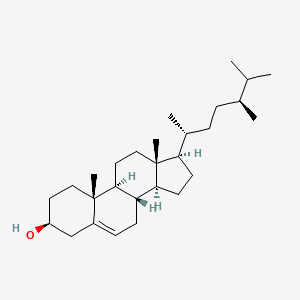
|
22,23-dihydrobrassicasterol |
22,23-dihydrobrassicasterol is a lipid of Sterol Lipids (ST) class. 22,23-dihydrobrassicasterol is associated with abnormalities such as Diabetes, Macular degeneration, Drusen, Systemic disease and Diabetes Mellitus. The involved functions are known as cholesterol metabolism, Synthesis, Intestinal Absorption, Liver function and cholesterol absorption. 22,23-dihydrobrassicasterol often locates in Back and Cell membrane. The associated genes with 22,23-dihydrobrassicasterol are apolipoprotein E-3. The related lipids are Total cholesterol, campesterol, lathosterol, Fatty Acids, Nonesterified and Cholesterol, Dietary. |
125 |
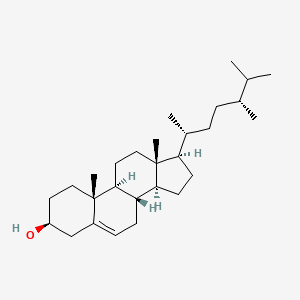
|
Campesterol |
Campesterol is a lipid of Sterol Lipids (ST) class. Campesterol is associated with abnormalities such as Still, Dehydration, Edward's syndrome NOS, Dwarfism and hypercholesterolemia. The involved functions are known as Excretory function, Physiologic Organization, Mutation, Signal Transduction and inhibitors. Campesterol often locates in Membrane, Cell membrane, Body tissue, Microsomes and Tissue membrane. The associated genes with Campesterol are Alleles, Homologous Gene, N-dodecyl-L-lysine amide, apolipoprotein E-3 and ABCG8 gene. The related lipids are Sterols, Membrane Lipids, campesterol, Fatty Acids, Nonesterified and brassinolide. |
288 |
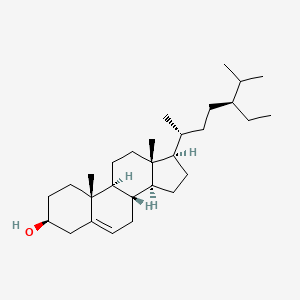
|
Clionasterol |
Clionasterol is a lipid of Sterol Lipids (ST) class. The involved functions are known as Intestinal Absorption. The related lipids are 22-hydroxycholesterol. |
711 |
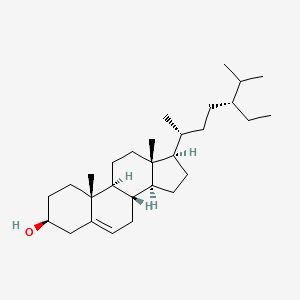
|
Beta-sitosterol |
Beta-sitosterol is a lipid of Sterol Lipids (ST) class. Beta-sitosterol is associated with abnormalities such as Obesity, Diabetes, Cholestasis, Systemic disease and Diabetes Mellitus. The involved functions are known as Increased Cholesterol Synthesis, Synthesis, cholesterol metabolism, GLUCOSE TOLERANCE and cholesterol absorption. Beta-sitosterol often locates in Blood, Back, Cell membrane, soluble fraction and Body tissue. The related lipids are Sterols, lathosterol, Total cholesterol, campesterol and Cholestanes. |
380 |
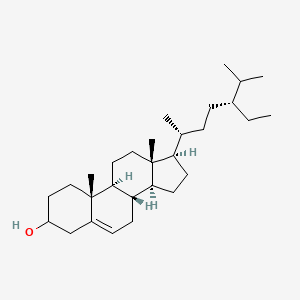
|
3beta-sitosterol |
|
234 |
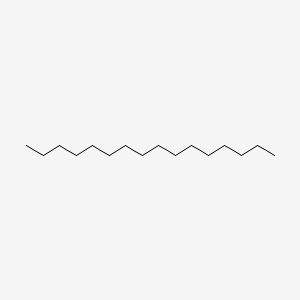
|
Hexadecane |
Hexadecane is a lipid of Fatty Acyls (FA) class. The involved functions are known as Analyte. The related lipids are Fatty Acids and palmitoleic acid. |
1835 |
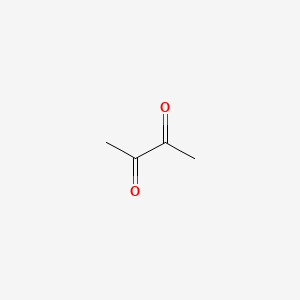
|
2,3-butanedione |
2,3-butanedione is a lipid of Fatty Acyls (FA) class. The involved functions are known as Physiologic Organization, Biochemical Pathway, physiological aspects, establishment and maintenance of localization and Phosphorylation. 2,3-butanedione often locates in Membrane, Microfilaments, Microtubules, Cell body of neuron and filamentous actin location. The associated genes with 2,3-butanedione are SLC33A1 gene and WASF1 gene. |
2715 |

|
Triolein |
Triolein is a lipid of Glycerolipids (GL) class. Triolein is associated with abnormalities such as Lymph fistula and Hyperlipidemia. The involved functions are known as Exocytosis, cholesterol transport and lipoprotein lipase activity. Triolein often locates in Mucous Membrane, Hepatic and Intestinal Mucosa. The related lipids are Cholesterol, Dietary. The related experimental models are Knock-out. |
2752 |

|
Platelet activating factor |
Platelet activating factor is a lipid of Glycerophospholipids (GP) class. Platelet activating factor is associated with abnormalities such as Atherosclerosis, Acute cholecystitis without calculus, Cholecystitis, Colitis and Cholecystitis, Acute. The involved functions are known as Cell Survival, Metabolic Inhibition, lipid oxidation, Apoptosis and Oxidation. Platelet activating factor often locates in soluble, Cellular Membrane, Smooth muscle (tissue), Intima and Tissue specimen. The associated genes with Platelet activating factor are apolipoprotein A-I Milano, Homologous Gene, TSPO gene, HBEGF gene and SLC33A1 gene. The related lipids are Hydroxycholesterols, Liposomes, 25-hydroxycholesterol, Lysophosphatidylcholines and Lipopolysaccharides. The related experimental models are Knock-out, Mouse Model and Transgenic Model. |
7383 |
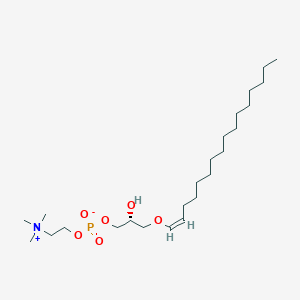
|
Lysoplasmenylcholine |
Lysoplasmenylcholine is a lipid of Glycerophospholipids (GP) class. Lysoplasmenylcholine is associated with abnormalities such as Ischemia, Congenital Abnormality and Myocardial Ischemia. The involved functions are known as membrane activity, Action Potentials, Hypoxia, Energy Absorption and Cell Death. Lysoplasmenylcholine often locates in Myocardium, Membrane, Extracellular, Axon and Sarcolemma. The associated genes with Lysoplasmenylcholine are THOC4 gene, POLE gene, SFLL and CA1 gene. The related lipids are Plasmalogens, Phosphatidylserines, Lysophospholipids, plasmenylcholine and lysoplasmenylcholine. |
76 |









